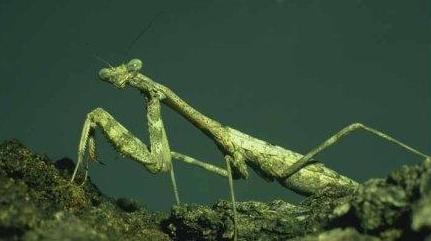|
Praying Mantids
View more pictures: Bing Images Google Images Yahoo Images Common names: Praying Mantids, Praying Mantis Scientific name: Mantidae Region: There are various species, about 20, found throughout North America. Life cycle: It produces one generation each year and overwinters as an egg. The eggs are laid in fall and hatch little mantids without wings in May and June. They grow slowly, fully maturing by August. In the northern regions, they live but a single summer and die with the onset of cold weather. In southern regions, they may enter a quiet interval, called diapause, during extremely dry weather. Physical description: This 2 1/2 inch long insect is green or brown, a long body with paper-like wings, and enlarged front legs that are used for grasping. Its eggs are white or light brown and are laid in large foam-like, straw colored masses which are glued to stems and twigs. Feeding characteristics: This insect preys on nymphs, aphids, beetles, Bugs, Leafhoppers, flies, bees, wasps, Caterpillars, butterflies, and each other. The female will often devour the male after mating, and newly hatched youngsters may feed on their siblings. As full-grown adults, they may also take on a salamander, shrew, or a small toad or frog. Controls: No controls are necessary. This is the type of insect that is desirable to have in your garden. Return from Praying Mantids to Insects M-P Encyclopedia of Garden Insects |
